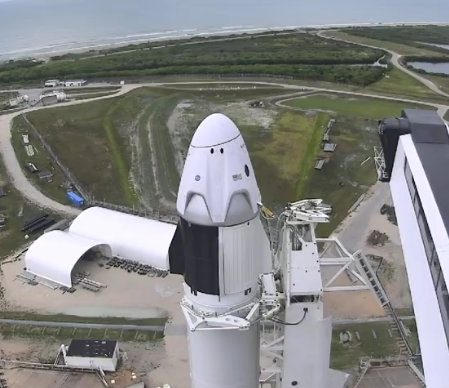Problems discovered in new Japanese H3 rocket engine
Engineers at Mitsubishi have discovered technical problems in the engine for Japan’s new H3 rocket, forcing its first test launch to be delayed into 2021.
The Japanese space agency JAXA told SpaceNews that problems were found with the new LE-9 engine’s combustion chamber and turbopump. “Fatigue fracture surfaces were confirmed in the apertural area of the combustion chamber inner wall and the FTP blade of the turbo pump,” according to a JAXA spokesperson.
JAXA and Mitsubishi Heavy Industries (MHI), the prime contractor for the H3, were aiming to hold the inaugural launch by the end of 2020 before the discovery of issues in May. However engineers testing the LE-9 cryogenic liquid hydrogen and liquid oxygen engine for the H3 first stage encountered a potential issue back in May. This led JAXA to announce in September that the first flight would slip to some time in Japanese fiscal year 2021, beginning April 1, 2021. The rocket’s second launch likewise slipped to Japanese fiscal year 2022.
The H3 is intended as a cheaper and more competitive version of Mitsubishi’s H2 rocket, which has failed to garner much business outside of Japanese government launches because of its cost. That the H3 isn’t being built to be reusable however means it will likely not achieve that goal, as it will not be able to lower it enough to compete with SpaceX.
This launch delay further weakens its ability to compete, as it gives more time for other cheaper alternatives to hit the market.
Engineers at Mitsubishi have discovered technical problems in the engine for Japan’s new H3 rocket, forcing its first test launch to be delayed into 2021.
The Japanese space agency JAXA told SpaceNews that problems were found with the new LE-9 engine’s combustion chamber and turbopump. “Fatigue fracture surfaces were confirmed in the apertural area of the combustion chamber inner wall and the FTP blade of the turbo pump,” according to a JAXA spokesperson.
JAXA and Mitsubishi Heavy Industries (MHI), the prime contractor for the H3, were aiming to hold the inaugural launch by the end of 2020 before the discovery of issues in May. However engineers testing the LE-9 cryogenic liquid hydrogen and liquid oxygen engine for the H3 first stage encountered a potential issue back in May. This led JAXA to announce in September that the first flight would slip to some time in Japanese fiscal year 2021, beginning April 1, 2021. The rocket’s second launch likewise slipped to Japanese fiscal year 2022.
The H3 is intended as a cheaper and more competitive version of Mitsubishi’s H2 rocket, which has failed to garner much business outside of Japanese government launches because of its cost. That the H3 isn’t being built to be reusable however means it will likely not achieve that goal, as it will not be able to lower it enough to compete with SpaceX.
This launch delay further weakens its ability to compete, as it gives more time for other cheaper alternatives to hit the market.






